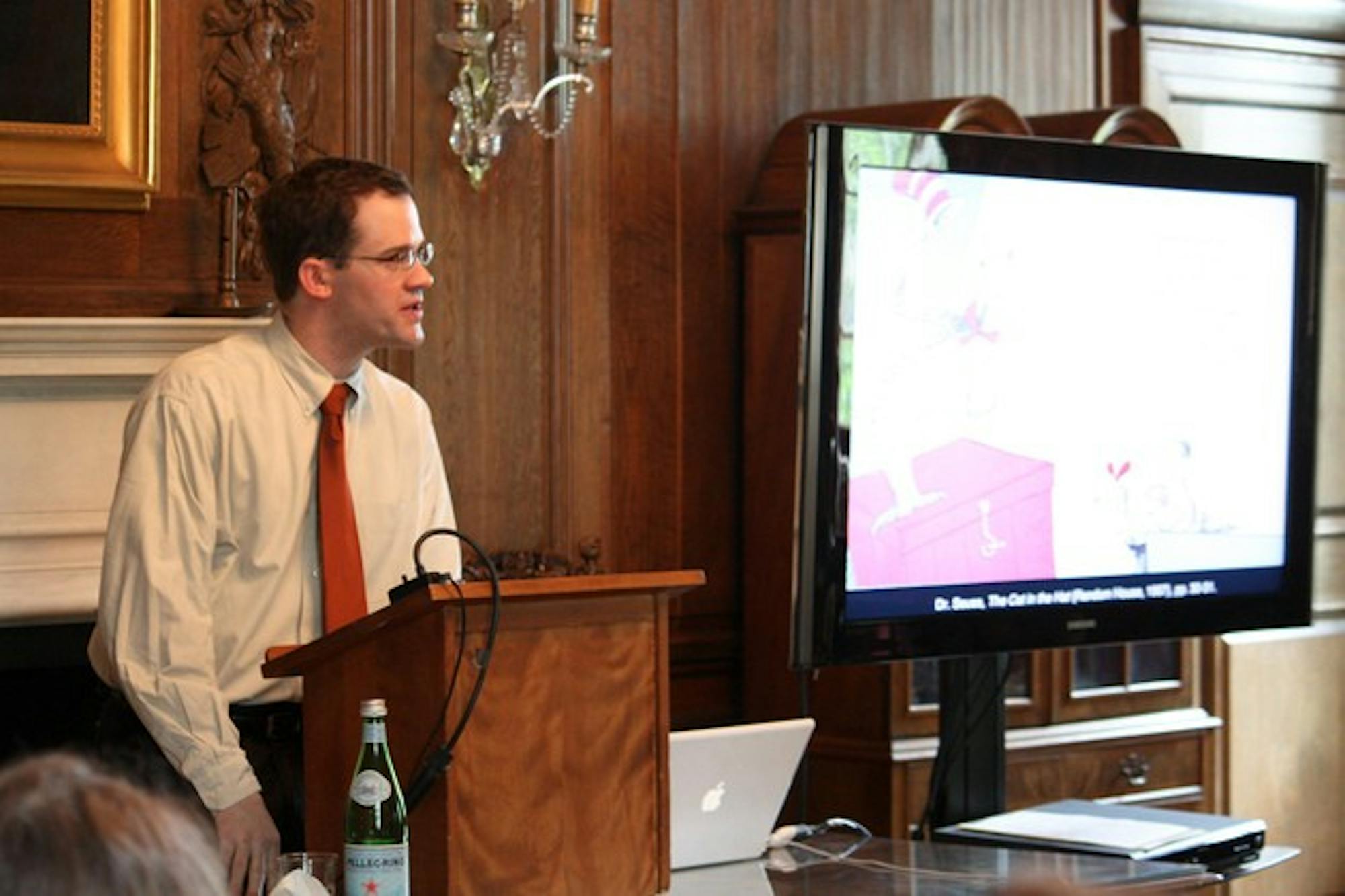The Cat's mischievous character and "outrageous" clothes were influenced by stereotypes of African-Americans depicted in minstrel shows and cartoons of the period, according to Nel.
"Such tacky costumes signal Cat's and blackface characters' aspiration to and unawareness of bourgeois sensibility," Nel said.
The word "cat" itself is a 1930s African-American slang term for musician, and the Cat is depicted playing various instruments in several of Seuss' books.
The Cat's presence in the children's home in the book demonstrates the character's "ambiguous" nature, Nel said. While the cat brings needed entertainment to the children, he also "creates chaos" that threatens to destroy the house. According to Nel, the Cat's rule-breaking personality is influenced by stereotypes of African-Americans as both entertainers and provocateurs.
The Cat is ultimately "both fun and terrifying, welcomed and rejected, the object of ridicule and a force to be reckoned with," Nel said.
Nel also pointed to reinterpretations of the Cat by other authors that depict him as black. In Robert Coover's 1968 book, "Cat and the Hat for President," the Cat is depicted as a parody of Uncle Sam who is eventually lynched and eaten by a mob, inducing drug-like effects. In the parody, "The Cat Not in the Hat" by Dr. Juice, published in 1995, the Cat is depicted as O.J. Simpson and rhymes about the murder of his wife, Nel said.
Throughout the lecture, Nel displayed various drawings by Geisel and other artists illustrating his points.
In the talk, Nel traced how Geisel's experiences with race affected his life. As a student during World War I, classmates beat and teased Geisel for having a German father, according to Nel. A 17-year-old Geisel also performed in blackface in a high school play. At Dartmouth, Geisel initially did not get a bid at a fraternity because he was thought to be Jewish.
Geisel's racial views continued to change over his professional career as he made a "conscious effort to avoid stereotypes," Nel said. As a cartoonist during World War II, Geisel criticized anti-semitism and discrimination against African-Americans, yet depicted Japanese-Americans as disloyal, according to Nel. In works like "Horton Hears a Who!" and "The Sneetches and Other Stories," Geisel consciously included anti-discrimination messages, but he also included stereotypical portrayals of Africans in "If I Ran the Zoo" and the Irish in "How the Grinch Stole Christmas," Nel said.
"These images appeared in Seuss' work because he was a cultural sponge," Nel said. "He absorbed almost everything he saw, and he reflected his influences in his work."
Nel described "The Cat in the Hat" as a "crossroads" for Geisel's changing views.
"The book carries both the unconscious racism of his earliest work and the progressive idealism of his mature work," he said.
Nel suggested that the Cat, as a character, could reflect Seuss.
"There is a more complex, subtle and ambiguous relationship between [Seuss'] progressive politics and his record of advocating when it comes to his political beliefs," he said. "The Cat embodies these complexities and ambiguities. Perhaps these are the qualities that give the Cat his enduring cultural power."
Nel has written several books about children's literature, including "The Annotated Cat: Under the Hats of Seuss and His Cats" and "J.K. Rowling's Harry Potter Novels: A Reader's Guide." The English department sponsored Monday's lecture.




